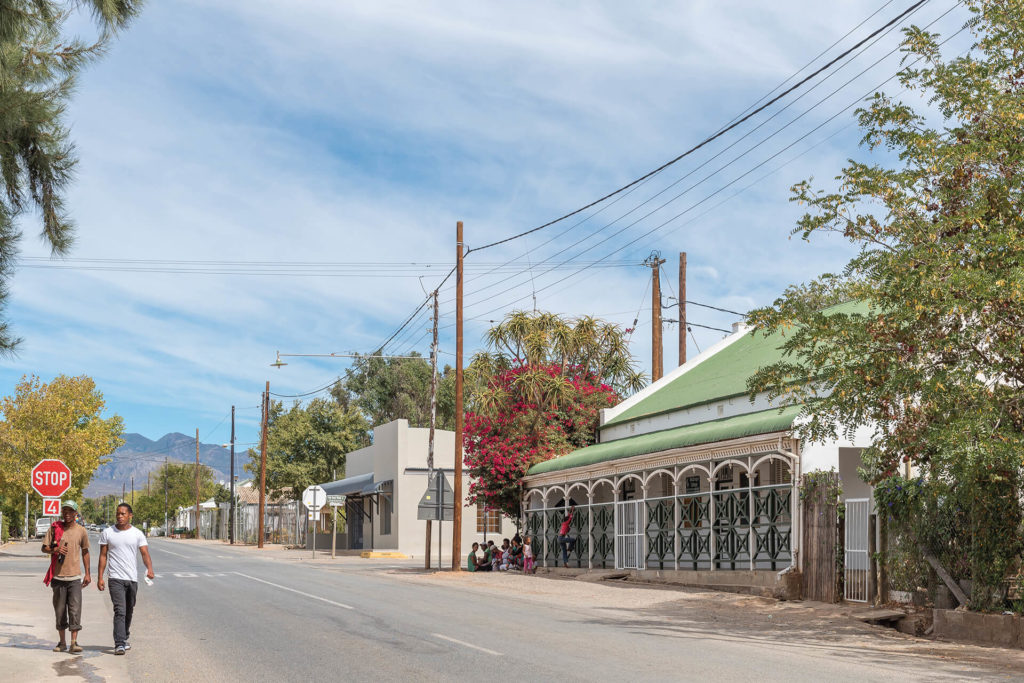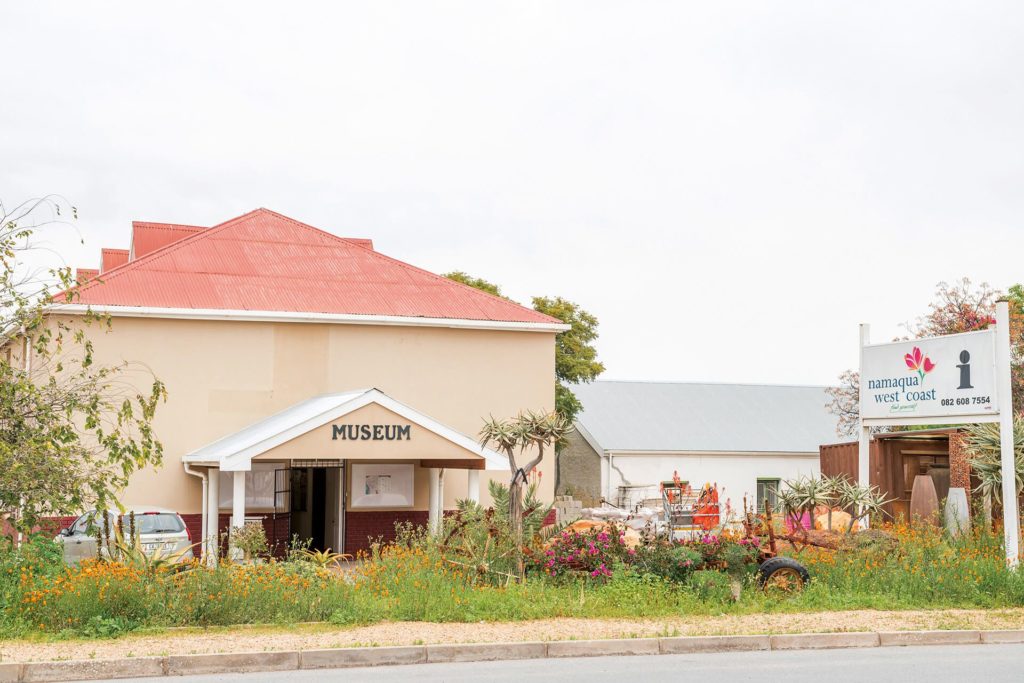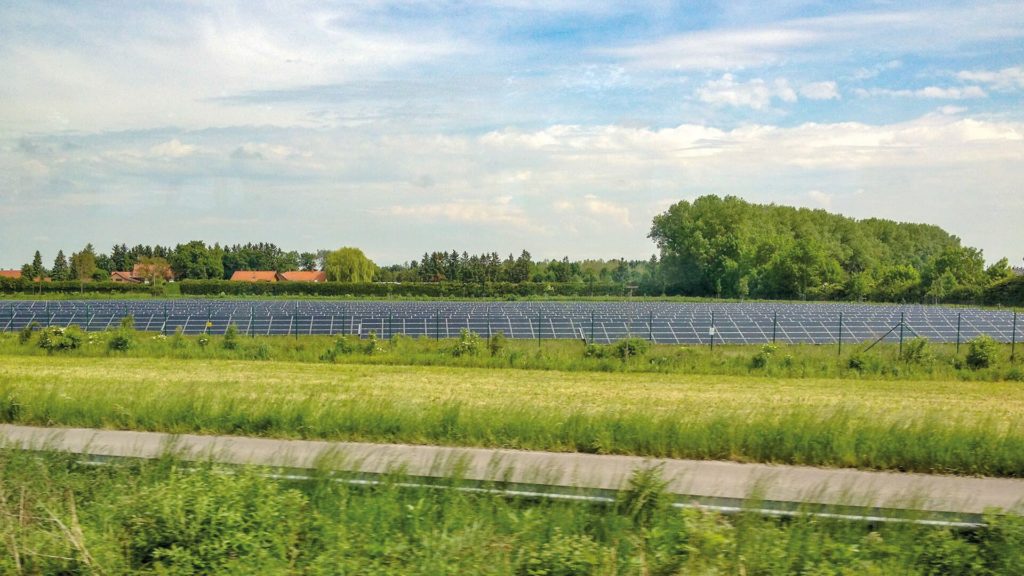Intermediary Cities Can Drive the Energy Transformation
Small and medium-sized cities are best placed to lead the energy transition.
Most electric power in South Africa comes from ageing coal-fired facilities. Scheduled power outages – known locally as ‘load shedding’ – remain a daily reality and are expected to continue in coming years, showing the system’s limits. Rapid, above-inflation price increases over the last decade have made electricity unaffordable for many citizens which is suppressing economic development.
Compared to the rest of sub-Saharan Africa, where less than half of the people have access to electricity, most South Africans (85% in 2019) do have access. But the population is growing faster than its leaders are electrifying households, thus asking even more from an already-pressured energy system.
Optimism soared at COP26 in November 2021 when the European Union, Germany, France, the United States, and the United Kingdom pledged $8.5 billion to finance a move to cleaner energy sources in South Africa. Yet, as the nature and roll-out of these finances remain unclear, change could come from the ground up. South Africa’s municipalities are in a unique position to drive change by decentralizing and stabilizing their own supply with renewable energy and could set an example for other countries to transition away from fossil fuels.

South Africa’s largest population is found in its smaller cities
The country’s large metropolitan areas are forging ahead with renewable energy projects to provide cheap, clean, consistent electricity. But it is the smaller cities and towns where the greatest gains could be made. An intermediary city typically has between 50,000 and 1 million residents. For these municipalities, day-to-day work focuses on bringing basic services and facilities to their people. As much as 60% of South Africa’s population lives in small cities, towns, villages and on farms. Yet they receive only 40% of the GDP distribution within the country and are often plagued with poor service delivery.
These municipalities often make most of their income by purchasing electricity in bulk from Eskom, the nationally-owned power utility, and selling it locally. Electricity purchases account for an average of 22% of a city or town’s expenses. After paying salaries, this is generally their second-largest expense. Increasing electricity prices are increasing expenditure and, as South Africans struggle to afford electricity, their revenue continues to decrease.
The problem goes deeper: since electricity sales form the backbone of smaller cities and towns’ income, they often cross-subsidize sectors to provide their people with services like water and waste collection. The failings of the national grid therefore not only put them under financial pressure but also compromises their ability to provide people with basic services.
Policy changes and finance innovations can help these local-level leaders spearhead a new way. With the right skills, they can take advantage of these changes and create their own future. Many of them already are.

Policy and finance innovations can bring clean power to the people
In the past, Eskom – the state-owned electricity utility – was completely in charge of electricity generation and they did so with mostly large-scale coal power plants. In recent years, the private sector started generating electricity. The Renewable Energy Independent Power Producer Procurement Programme (REI4P) is an internationally renowned example of how a national government created an enabling environment for bringing more actors into the energy landscape.
In South Africa, cities are finally acknowledged as essential in creating a more reliable electricity supply and not only as resellers of nationally-supplied electricity. New regulations allow cities to generate their own power by building their own energy projects. They may now also purchase power from private generators, not only Eskom.
Constructing projects, of course, costs money, and mid-sized cities often struggle to access the financial resources for renewable energy projects. In fact, accessing finance for infrastructure is a persisting challenge for most African cities. Financiers view new renewable energy projects in smaller cities and towns as risky investments, partly because these business models have not been thoroughly tested.
To combat this issue, the Development Bank of Southern Africa (DBSA), in partnership with the Green Climate Fund (GCF), has set up a $200 million Embedded Generation Investment Programme (EGIP) to stimulate growth of embedded generation initiatives in the country. Once all projects are in operation, the proposed investment will add 330 MW of solar photovoltaic and wind generating capacity, thereby directly avoiding emissions of more than 700,000 tCO2e per year.
While these policy and finance innovations are undoubtedly a step in the right direction, leaders need more than an enabling policy environment and news of a new investment program. Being located outside the large urban areas, staff in mid-sized cities have a range of responsibilities, and are often under-resourced, making it difficult for them to leverage these new opportunities. It is not surprising that few municipalities can compile a project proposal strong enough to meet stringent finance application requirements.
In South Africa, cities are finally being acknowledged as essential in creating a more reliable electricity supply, and not only as resellers of nationally-supplied electricity.
Intermediary cities can start producing renewable power
A new project empowers the leaders of South Africa’s small and medium cities to undertake the journey to producing their own clean power. ICLEI Africa, with funding from the UK PACT programme, is implementing the Alternative Financing for Municipal Embedded Generation (AFMEG) project in four intermediary cities. As program enabler, ICLEI Africa understands the municipal processes and systems, can link projects to suitable funding sources, and walks the complex infrastructure financing path with its cities and towns.
The lessons are going into a freely available toolkit to bridge the skills and resource gap that many intermediary cities face, assisting them to produce their own solar and wind energy. At the launch of the project in May 2021, Olympus Manthata, Head of Climate Finance at DBSA said:
“This opportunity came at the right point, and it made perfect sense to partner [with ICLEI] to take advantage of the opportunity. We are pleased we are successful and at a point where we can look at implementation.”
Over 2021, ICLEI Africa has been working with King Sabata Dalindyebo, Matzikama, Walter Sisulu, and Ray Nkonyeni Municipalities to apply to the project preparation facility of the Embedded Generation Investment Programme, making them the first municipal-led projects to apply to this facility. While King Sabata Dalindyebo and Ray Nkonyeni Municipalities are both planning solar projects of around 43 MW each, Walter Sisulu and Matzikama are planning smaller solar projects at 16 MW and 4 MW respectively.
The projects were designed to meet the electricity requirements of the municipality and easily integrate into the distribution network. The Alternative Financing for Municipal Embedded Generation (AFMEG) team supported all four municipalities to develop financial models and pre-feasibility studies, generating cutting-edge knowledge within this new space of local-level climate finance.

Driving a global clean energy transformation
These learnings and other useful resources have a free, online home, that anyone interested in kick-starting a city-led energy transition can access. The Cities’ Embedded Generation Toolkit on Learn With ICLEI Africa aims to empower many more city leaders, as this resource hub continues to grow.
Participants will learn about climate change, a just energy transition, and mainstreaming gender in the energy sector, as well as the South African policies around embedded generation.
City officials ready to dive into the technicalities will find the sections on technical considerations and financing for embedded generation most useful. This is specifically where ICLEI Africa will continue to add resources and learnings as they move forward with the four project cities through the EGIP application process.
South Africa is a leading example of a global southern hemisphere country transitioning – justly – away from coal power to renewables. If four of South Africa’s intermediary cities can successfully apply for climate finance and start construction on their own renewable energy projects, it can forge a path for many more to follow. About 75% of the world’s population lives in urban settlements of fewer than 500,000 people, and if these mid-sized cities, towns, and villages can get their own renewable energy project off the ground, it can drive the global clean energy transformation.